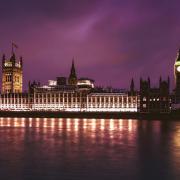
Each year, households across the UK decorate their houses with Christmas trees, but where does the tradition of decorating these trees originate from?
This tradition can be traced way back to the Egyptians, who adorned their homes with palm branches to celebrate the resurrection of their God Ra, who they believed had become ill during the cold winter months, but would triumph over this illness after the Winter Solstice. Ancient Roman Pagan traditions also saw people decorate their households with evergreen boughs to celebrate the Solstice- the beginning of the prosperity of their crops. Other pagan rituals saw evergreen branches brought into houses as people hoped to survive the winter months, aspiring to the resistance these plants had to the bitter winter months compared to dying deciduous trees. Ancient Germanic peoples worshipped their God Woden by adorning their homes with evergreen branches, celebrating eternal life. The famous Protestant Martin Luther is said to have cut down a fir tree and decorate it with lighted candles to recreate stars in the sky he had seen.
A portrait of Queen Victoria, her husband Albert and their children standing around a decorated Christmas tree issued in a newspaper 1840 is said to have initiated the modern-day tradition of Christmas trees in the UK as this picture was published and popularized the custom.
However, Christmas trees have faced much opposition. Puritans in England including Oliver Cromwell himself condemned the decorations as profaning the sacred holiday. Some Christian opposition of Christmas trees originated from opposition to Pagan rituals of bringing nature into the home.
Despite this, Christmas trees remain an incredibly popular custom in the UK and across the world, and definitely wont be going anywhere any time soon.


























